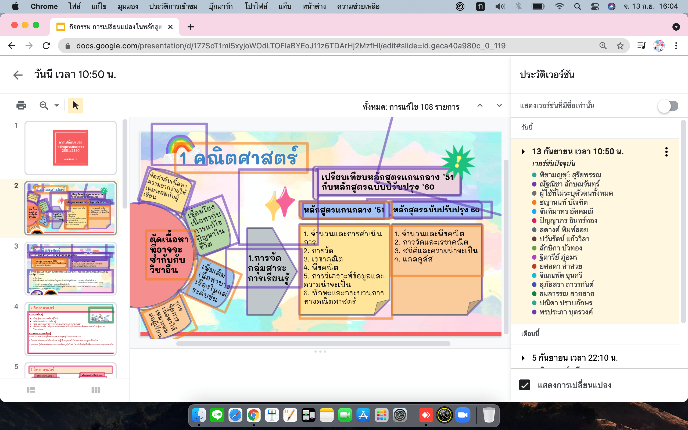Technology Digital with Collaborative Online Learning
Main Article Content
Abstract
The coronavirus disease 2019 (COVID-19) has changed education management from being classroom-based learning to online learning on a digital platform instead. The design of learning activities is now adapted to learners by integrating digital technology to encourage learner participation. This has been done according to the 21st-century learning management approach, which develops the thinking process for learners to seek knowledge and choose their preferred method of learning.
The goal is to design online collaborative learning activities which are appropriate, creative and which also incorporate digital technology in five processes; First, the teacher (or instructor) still plays an integral role in presenting the learner with a range of lesson topics and learners then choose their lesson according to their interests; Second, the learner meets, plans and creates an agreed upon goal, determines the scope of the topic as well as methods for conducting and scheduling joint studies; Third, the learner is responsible for conducting research studies and discussing the group's information together; Forth, the learner presents what has been learned and shares them in class; and In the final process, teacher and learner discuss together and ask questions, as well as summarize the lessons and evaluate the learning outcomes together.
All of the processes, the instructor serves to give advice and encourage students to mindfully and continually create a thought process, which would lead to creativity in producing workpieces or bodies of work and knowledge to their full potential.
Downloads
Article Details

This work is licensed under a Creative Commons Attribution-NonCommercial-NoDerivatives 4.0 International License.
References
เทื้อน ทองแก้ว. (2563). การออกแบบการศึกษาในชีวิตวิถีใหม่: ผลกระทบจากการแพร่ระบาด COVID-19. คุรุสภาวิทยาจารย์, 1(2), 1-10.
พิชญ์สินี มะโน. (2562). ผลกระทบจากการเปลี่ยนแปลงใน ยุค digital disruption ต่อการศึกษา. วารสารครุศาสตร์อุตสาหกรรม, 18(1), 1-6.
ภูษิมา ภิญโญสินวัฒน์. (2563). จัดการเรียนการสอนอย่างไรในสถานการณ์โควิด-19: จากบทเรียนต่างประเทศสู่การ จัดการเรียนรู้ของไทย. สืบค้นจาก https://tdri.or.th/2020/05/examples-of-teaching-and-learning-in-covid-19-pandemic/
เครือข่ายมหาวิทยาลัยราชภัฏ 38 แห่ง. (2563). การเรียนการสอนออนไลน์ในสถานการณ์การแพร่ระบาดของโควิด-19. สืบค้นจาก https://register.kpru.ac.th/RajabhatPoll/?nu=20200007_report_poll
สำนักงานคณะกรรมการการศึกษาแห่งชาติ. (2542). พระราชบัญญัติการศึกษาแห่งชาติ พ.ศ. 2542 และที่แก้ไขเพิ่มเติม (ฉบับที่ 2) พ.ศ. 2545. กรุงเทพฯ: สำนักงานคณะกรรมการการศึกษาแห่งชาติ.
สำนักวิชาการและมาตรฐานการศึกษา. (2562). แนวทางการนิเทศเพื่อพัฒนาและส่งเสริมการจัดการเรียนรู้เชิงรุก (Active Learning) ตามนโยบายลดเวลาเรียนเพิ่มเวลารู้. สืบค้นจาก http://academic.obec.go.th/images/document/ 1603180137_d_1.pdf
สำนักงานราชบัณฑิตยสภา. (2561). ว่าด้วย...ดิจิทัล. สืบค้นจาก http://legacy.orst.go.th/wp-content/uploads/2018/04/01182561%E0%B8%A7%E0%B9%88%E0%B8%B2%E0%B8%94%E0%B9%89%E0%B8%A7%E0%B8%A2%E0%B8%94%E0%B8%B4%E0%B8%88%E0%B8%B4%E0%B8%97%E0%B8%B1%E0%B8%A5.pdf
อุดม หอมคำ. (2561). ผลการใช้กิจกรรมการเรียนร่วมกันกับเพื่อนสนิทและคนรู้จักโดยใช้กูเกิลด็อกเพื่อส่งเสริมการเรียนรู้ด้วยตนเองของนักศึกษามหาวิทยาลัยราชภัฎสุรินทร์. วารสารครุศาสตร์ มหาวิทยาลัยราชภัฏราชนครินทร์, 20(ฉบับพิเศษ), 243-253.
Ansari, J. A. N. & Khan, N. A. (2020). Exploring the role of social media in collaborative learning the new domain of learning. Retrieved from https://slejournal.springeropen.com/articles/10.1186/s40561-020-00118-7
Faroun, I.K. (2020). Collaborative learning. Retrieved from https://www.researchgate.net/publication/340550128_Collaborative_Learning
World Economic Forum. (2020). The world economic forum COVID. Retrieved From https://www.weforum.org/agenda/2020/04/coronavirus-education-global-covid19-online-digital-learning


